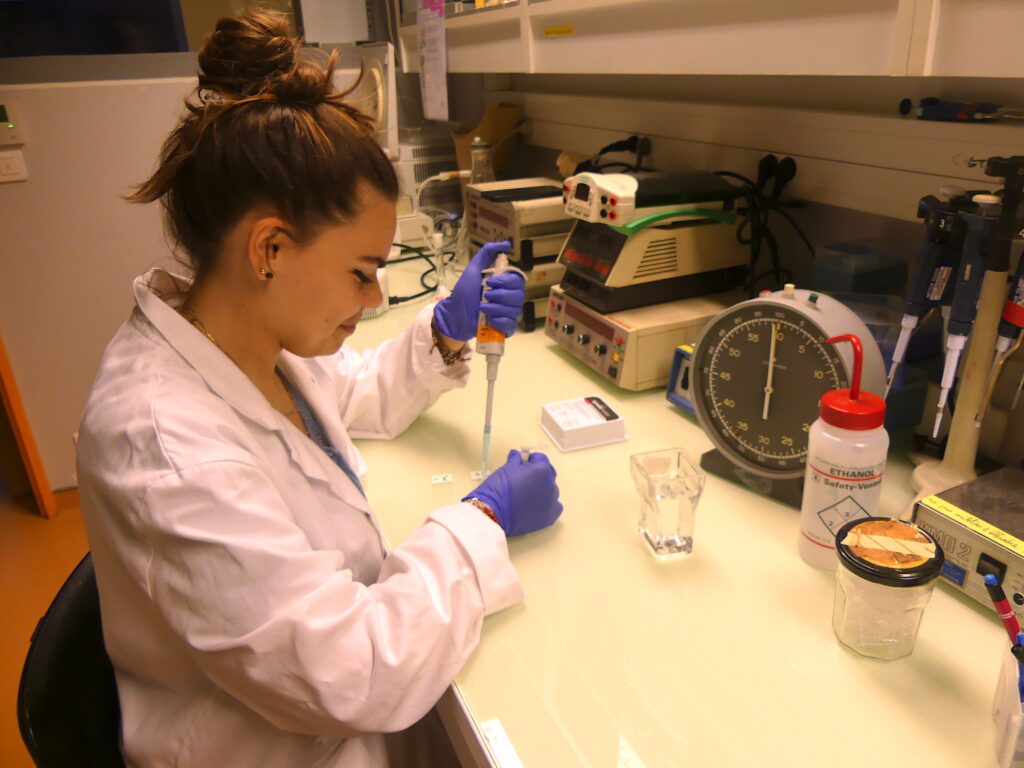15/07/2024
The CRC invites you to discover its research through beautiful scientific images from its labs. This is the “CRC Studio” series, to be followed throughout the year.
This cross-sectional image of a kidney was obtained by Elise de Combiens during her thesis work in the Renal Physiology and Tubulopathy Laboratory, directed by Gilles Crambert.

We can clearly see small tubes called tubules, the inside of which appears in black in this image. Tubules are one of the components of the nephron, the functional unit of the kidney whose main function is to maintain the composition of blood fluid. They therefore play a role in the production of urine and the evacuation of body waste.
The walls of the tubules are made up of cells, here stained with various markers: the nuclei appear blue, while the cytoskeleton, made up of tubulin, is colored red. But what really catches the eye is the bright green of the mitochondria, the cell’s energy powerhouses.
Why is Elise interested in mitochondria?
Because she’s studying Dent’s disease, a rare kidney disorder that may be accompanied by an alteration in mitochondria in the kidney.
Dent’s disease is a rare inherited disorder caused by a mutation in the CLCN5 gene, which codes for a protein involved in the reabsorption of proteins from urine into the bloodstream. The disease affects the proximal tubule, the first segment of the nephron, and results in urinary loss of small proteins, calcium, glucose, magnesium and phosphate, with variations from patient to patient.

Affected individuals may develop kidney stones (nephrolithiasis) or calcium deposits in kidney tissue (nephrocalcinosis). The disease frequently progresses to chronic renal failure.
Elise’s objective is to better characterize the mechanisms involved in the evolution of this disease, and in particular to study the mitochondria of the proximal tubules, in order to identify potential therapeutic avenues for patients.
At laboratory level, Gilles Crambert’s team is dedicated to the study of renal physiology to understand how this organ functions and adapts to various environments, as well as to diseases affecting the tubules (tubulopathies) such as Dent’s disease. Ultimately, a better understanding of renal function will lead to a better understanding of its dysfunctions, and to the development of relevant new therapeutic avenues.

